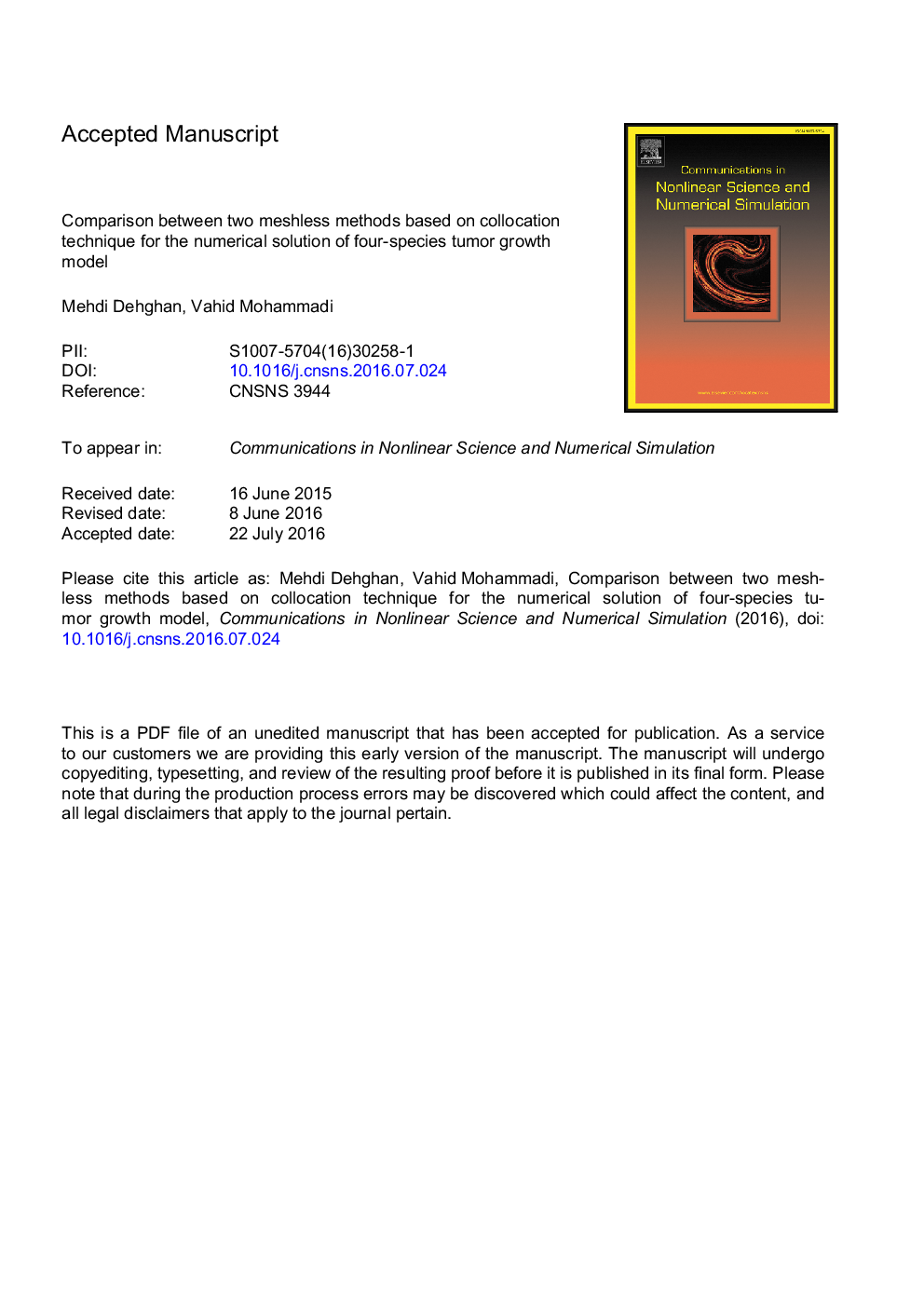| Article ID | Journal | Published Year | Pages | File Type |
|---|---|---|---|---|
| 7154950 | Communications in Nonlinear Science and Numerical Simulation | 2017 | 26 Pages |
Abstract
As is said in [27], the tumor-growth model is the incorporation of nutrient within the mixture as opposed to being modeled with an auxiliary reaction-diffusion equation. The formulation involves systems of highly nonlinear partial differential equations of surface effects through diffuse-interface models [27]. Simulations of this practical model using numerical methods can be applied for evaluating it. The present paper investigates the solution of the tumor growth model with meshless techniques. Meshless methods are applied based on the collocation technique which employ multiquadrics (MQ) radial basis function (RBFs) and generalized moving least squares (GMLS) procedures. The main advantages of these choices come back to the natural behavior of meshless approaches. As well as, a method based on meshless approach can be applied easily for finding the solution of partial differential equations in high-dimension using any distributions of points on regular and irregular domains. The present paper involves a time-dependent system of partial differential equations that describes four-species tumor growth model. To overcome the time variable, two procedures will be used. One of them is a semi-implicit finite difference method based on Crank-Nicolson scheme and another one is based on explicit Runge-Kutta time integration. The first case gives a linear system of algebraic equations which will be solved at each time-step. The second case will be efficient but conditionally stable. The obtained numerical results are reported to confirm the ability of these techniques for solving the two and three-dimensional tumor-growth equations.
Related Topics
Physical Sciences and Engineering
Engineering
Mechanical Engineering
Authors
Mehdi Dehghan, Vahid Mohammadi,
